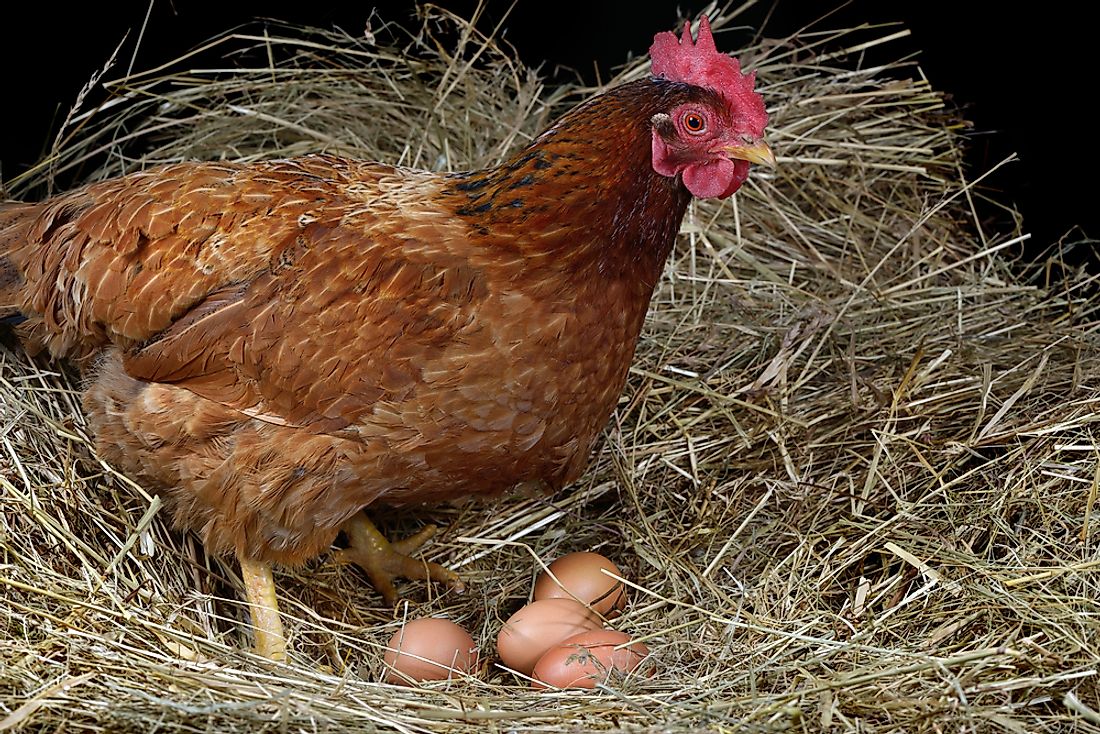What Are Oviparous Animals?

Animals that lay eggs are known as oviparous. Although fertilization of the egg can take place either internally or externally, hatching into a young one takes place in the external ecosystem, not inside the womb of the mother. Oviparous reproduction is common in reptiles, birds, amphibian, monotremes, arachnids, fish and insect species. Most of the land-living animals lay eggs with hard shells which are already fertilized internally. Fish and amphibians that dwell in water lay unfertilized eggs which are fertilized externally when the male releases sperms on top of the eggs. In both instances, embryonic development takes place outside the mothers’ body.
Modes of Reproduction
Oviparous reproduction is divided into ovuliparity and oviparity (true). The two modes are distinguished by how the zygote relates with the parents.
In the ovuliparity mode, the female lays an unfertilized egg which is fertilized by the male outside the body of the female. The eggs, also known as oocytes, have a high-quality yolk that is able to support the growth and development of the embryo after it is fertilized. The mode is practiced among some fish species, Cnidaria, Mollusca, Echinodermata, and amphibians.
The second mode is the true oviparity where fertilization is purely internal. The egg contains a zygote which has a substantially high quality of yolk enough to sustain the embryo as it develops inside the egg. The female does not retain the egg in its body for a long period of time during its development. Oviparity mode occurs in birds, some fish species, most Arthropoda, and reptiles.
Nourishment for the Embryo
The only source of nourishment for the embryo is the yolk. The materials making up the yolk are deposited by the reproductive system of the female. The upcoming offspring is said to be lecithotrophic since its only source of food is the yolk. The nourishment is in contrast with the matrotrophic mode where the embryo has other sources of nourishment such as the placenta.
Oviparous Mammals
Mammals across the world are known to give birth. However, there are mammals, despite being warm-blooded reproduce by laying eggs. There are five species of oviparous mammals commonly referred to as monotremes. The distinct characteristic is the ability to produce milk to suckle young ones even after laying one or two fertilized eggs. The mammals lay eggs due to their biological creation whereby they have only one hole for the elimination of waste and ingestion. Oviparous mammal living today include western long-beaked echidna, duck-billed platypus, Sir David’s long-beaked echidna, short-beaked echidna, and the eastern long-beaked echidna. The monotremes live in New Guinea in Africa and some parts of Australia.
Advantages of Oviparous Reproduction
After releasing the egg, oviparous animals are able to continue with daily chores including feeding and locomotion. There is no space constraint hence litter size is not affected. The third advantage is that net reproduction is high since there is no delay in bringing forth young ones before the next group of offspring is brought forth. The female does not need to consume a lot of food and nutritional supplements since there is no fetus developing inside her body. On the other hand, the mother is safer from predators since she can run as fast as usual. Lastly, laying of eggs is easier compared to labor pains experienced by the viviparous animals.











